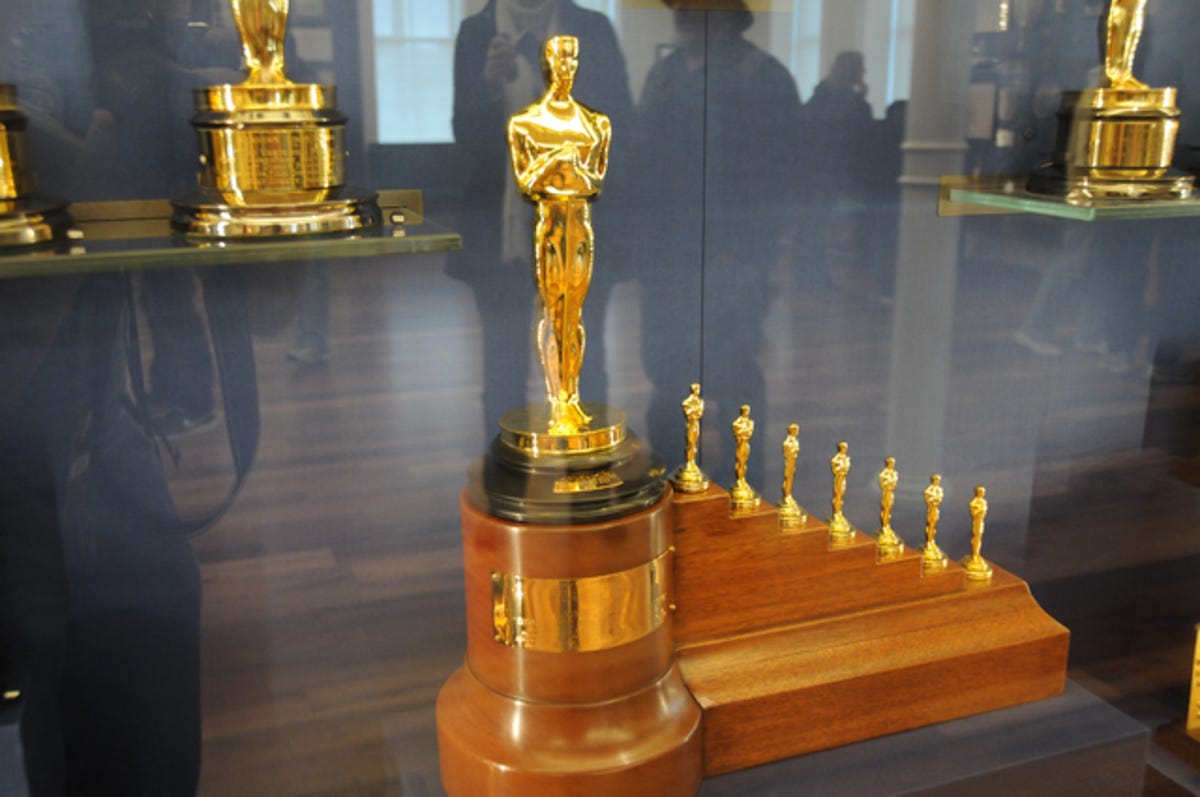Walt Disney's wonderful life (photos)
Road Trip at Home: Just more than a year ago, the Walt Disney Family Museum in San Francisco opened its doors. CNET's Daniel Terdiman checks it out.

Snow White Oscar
The museum is a fantastic tour through Disney's life--and the works that made him and his company so famous. Stretching from his earliest days as an animator all the way to his death, it is ten galleries full of original concept art, posters, figurines, and much, much more, all guaranteed to delight any Disney fan.
But it's not just a celebration of Mickey Mouse and friends. The museum also highlights some of the more controversial parts of the animator's life, including his testimony to the House Un-American Activities Committee, a major strike at Disney Studios, and the company's work making war propaganda for the U.S. military.
Yet, in the end, it's Disney's work in the movies that carries the day. And perhaps there is no better celebration of his success than this very special Oscar, which Disney was awarded in 1939 for "Snow White and the Seven Dwarves" by Shirley Temple and which included seven small Oscar figurines.
Earliest Mickey Mouse drawing
Mickey Mouse story sketches
Alice
Oswald
Later, however, another cartoonist, Charles Mintz, managed to wrest control of the Oswald series away from Disney--which is what forced Disney to come up with something new. That ended up being Mickey Mouse.
Now, Oswald is Mickey Mouse's antagonist in a new video game from Disney called Epic Mickey. The story is built around a world--crafted by the sorcerer from "The Sorcerer's Apprentice"--in which a series of forgotten Disney creations live, and thrive. Among those characters is Oswald, who achieved fame as Walt Disney's earliest cartoon star. As the years pass and Oswald becomes bitter at Mickey's success, Mickey inadvertently destroys Oswald's comfort zone in the cartoon wasteland and he must face the consequences of what he has accidentally wrought.
Walt at the Pathe camera
Business card
This is Disney's business card from the venture, which fell on hard financial times after some dubious distribution contracts.
Plane Crazy
Steamboat Willie
Donald Duck model sheets
Mickey and Minnie
Disney colors
Dwarves model sheet
Snow White model sheet
Mickey and Pluto
"Starting as a nondescript hound in 'The Chain Gang' (1930), Pluto evolved into Mickey Mouse's faithful pal. In the hands of skilled Disney animators, Pluto also became a vehicle for the development of personality animation, notably in the classic Flypaper Sequence in 'Playful Pluto' (1934)."
Goofy
Pinocchio character sketch
Jiminy Cricket singing
Mickey Mouse telegram
Mickey Hangs hit Hat at RKO
Victory through Air Power
Der Fuehrer's Face
Strike Flyer
"More stressful than the revised mechanics of production was the toll that had been taken on personal relationships. The strike would long be remembered as a painful crisis in Disney studio history, and it left bitter divisions among former friends that would not be forgotten for years."
Oscar display
Multiplane camera
"As the Disney camera department worked with the original prototype of the multiplane, they introduced new refinements into the system. Eager to make the most of this exciting device, the artists pushed its capabilities to the limit. Some 'multiplane' scenes in 'Pinocchio' and 'Fantasia' became so elaborate that even the standard multiplane cranes could not accommodate them; instead, they were filmed on makeshift horizontal tracks on the studio's soundstage."
Disney eventually owned three multiplane cranes. The one seen here is the third.
Straight on
Annual report
Bambi
Sorcerer's Apprentice concept sketch
Chernobog
Dumbo
Mitchell underwater camera
According to the museum, "The underwater photography of '20,000 Leagues' presented technical challenges. The camera crew, required to work quickly and efficiently underwater, needed a production-quality camera with an accurate viewfinder, precise image steadiness, and a housing that was easily maneuverable underwater.
"The Mitchell 35mm High Speed Camera with 400-foot film capacity was chosen. The camera featured through-the-lens viewing for accurate focus and composition, and a large viewfinder that enabled the cameraman and director to view while shooting.
"But no underwater housings were available for the camera at the time. Under the direction of Roger Broggie, with the assistance of Bob Otto, the studio machine shop designed and built the underwater housing. An important feature of the housing, to prevent leaks, was a miniature air tank for equalizing the internal pressure with the outside water pressure as the camera submerged. Leaks were successfully prevented, and in less than two months the camera was filming."
Disneyland concept model
Straight on view of Disneyland model
Press ticket
Disneyland posters
Epcot
The Carolwood Pacific
The engine is a replica of the Central Pacific Railroad's old engine No. 173, and it is built in 1.5-inch scale. It ran on steam, by burning coal, and its whistle blew. When completed, it was meant to carry as many as 30 people along the half-mile of track it ran on.

